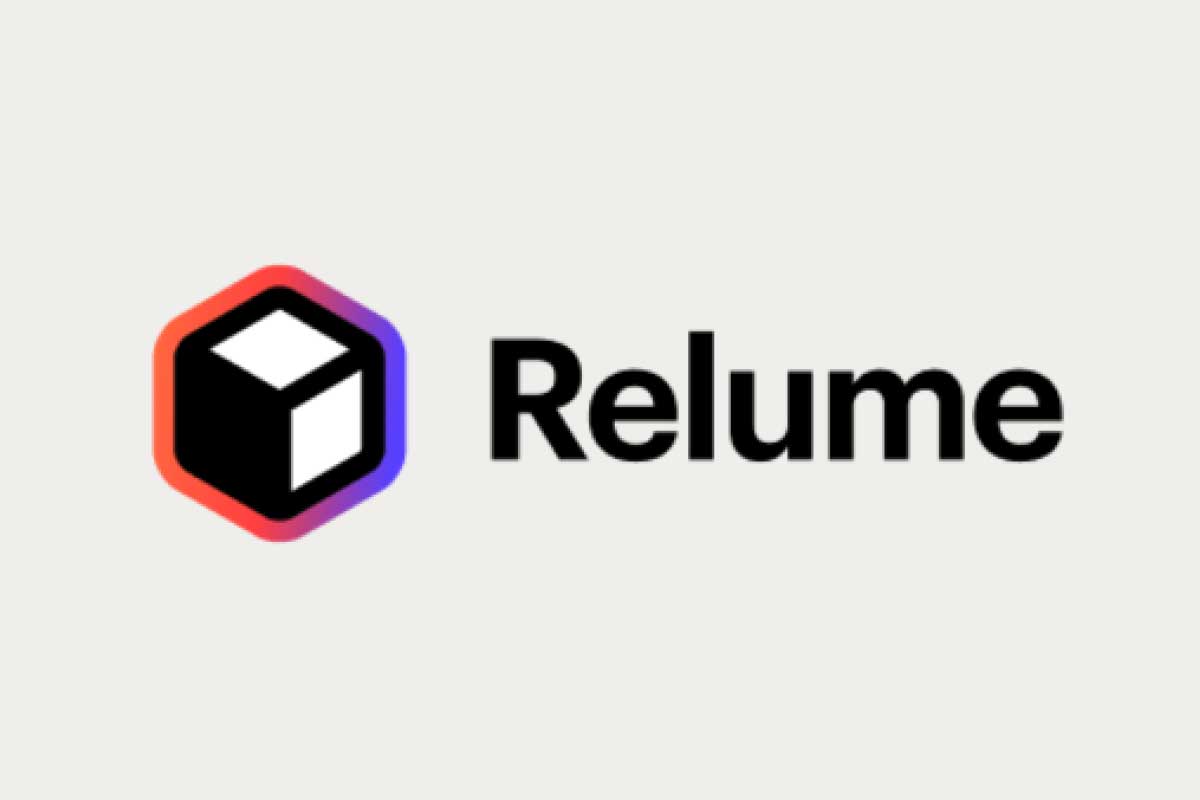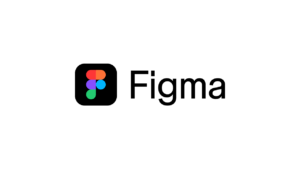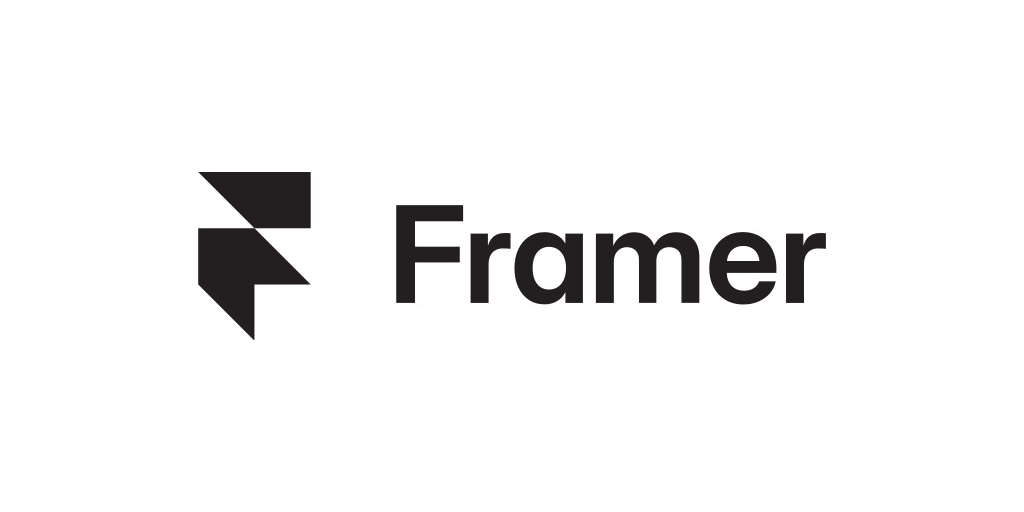- Micro-animations on buttons and images
- Personalized hover effects
- Consistent iconography and color accents throughout the site
These little upgrades show that you’re not only skilled in your craft but also aware of modern digital trends.
Clients and employers notice the difference between a standard portfolio and one that feels professional, polished, and innovative.
Start with one or two enhancements that are realistic for your workflow. Overloading your site with features can slow performance or distract from your work. Focus on quality over quantity, each upgrade should add real value to the user experience.
Conclusion
Think about what you just accomplished. In less than an hour, you:
- Planned your website structure with Relume AI
- Designed and customized it in Figma
- Published a fully functional, live portfolio with Framer
- Optimized your site with AI-generated copy and visuals
Not long ago, this process would have taken weeks, and potentially thousands of dollars if you hired a professional designer. Now, thanks to AI, anyone can launch a polished, professional personal brand in a single afternoon.
The best part? This is just the beginning. You can continue refining your portfolio, adding new projects, and expanding as your career grows. But the hardest step, actually getting started, is already done.
- AI-Generated Visuals – Custom imagery can make your site unique and memorable. Tools like MidJourney or Canva AI allow you to generate illustrations, icons, backgrounds, and graphics that match your brand’s style. Whether it’s a hero image for your homepage or subtle patterns in the background, AI visuals help your portfolio stand out from generic templates.
- Interactive Contact Form with AI Chatbot – Instead of a standard form, consider an AI-powered chat interface using tools like Intercom or ManyChat. Visitors can ask questions, book calls, or request information in a conversational way. This not only makes communication more engaging but also increases the chances of capturing leads.
- AI Analytics Tools – Understanding visitor behavior is key to improving your portfolio. Connect tools like PaveAI to your Google Analytics account to turn raw data into actionable insights. Learn which projects get the most attention, which pages users leave quickly, and how visitors interact with calls to action. This data allows you to continuously refine your portfolio for better engagement and conversions.
- Subtle Branding Enhancements – Small details can leave a lasting impression:
- Micro-animations on buttons and images
- Personalized hover effects
- Consistent iconography and color accents throughout the site
These little upgrades show that you’re not only skilled in your craft but also aware of modern digital trends.
Clients and employers notice the difference between a standard portfolio and one that feels professional, polished, and innovative.
Start with one or two enhancements that are realistic for your workflow. Overloading your site with features can slow performance or distract from your work. Focus on quality over quantity, each upgrade should add real value to the user experience.
Conclusion
Think about what you just accomplished. In less than an hour, you:
- Planned your website structure with Relume AI
- Designed and customized it in Figma
- Published a fully functional, live portfolio with Framer
- Optimized your site with AI-generated copy and visuals
Not long ago, this process would have taken weeks, and potentially thousands of dollars if you hired a professional designer. Now, thanks to AI, anyone can launch a polished, professional personal brand in a single afternoon.
The best part? This is just the beginning. You can continue refining your portfolio, adding new projects, and expanding as your career grows. But the hardest step, actually getting started, is already done.
- Seamless Figma Import – Bring your Figma designs into Framer with just a few clicks. All your layouts, typography, and visual elements transfer automatically, so you can start working with your design immediately.
- Responsive Design Made Easy – Framer uses AI to ensure your site looks perfect across all devices. Desktops, tablets, and smartphones are automatically optimized, saving you hours of manual adjustments.
- Add Animations and Interactions – Make your portfolio feel dynamic with drag-and-drop animations, hover effects, and interactive buttons. Framer lets you create a professional, engaging user experience without coding knowledge.
- Custom Domain and Instant Publishing – Connect your own domain name and publish your site with a single click. No technical headaches, no complicated hosting setup, you’re online and ready to impress visitors within minutes.
In one hour or less, you can go from a concept in your head to a live portfolio that showcases your work, skills, and personality.
Compared to traditional methods, this workflow is not only faster but also more polished, giving you a professional web presence immediately.
After publishing, test your site on multiple devices and browsers to ensure everything functions smoothly.
Small adjustments in Framer, like tweaking spacing or button placement, can make a big difference in the user experience.
Step 5: Optimizing Your Portfolio with AI

A visually stunning portfolio grabs attention, but compelling copy is what keeps visitors engaged and convinces them to take action.
AI tools make it easy to craft professional, persuasive text that connects with your audience, without hours of trial and error.
How ai can help you improve your portfolio copy:
- Homepage Headline – Your headline is the first thing visitors read, so it needs to grab attention immediately. Use ChatGPT or similar AI tools to generate multiple headline options tailored to your audience. For example:
“Freelance Web Designer Helping Startups Launch Stunning Websites in Weeks (Not Months).”
You can create variations and pick the one that best reflects your brand’s tone and promise. - About Page – AI can draft a strong narrative for your story, including background, skills, and your unique value proposition. Once generated, tweak the copy to infuse your personal voice, anecdotes, or brand personality. This ensures the page feels authentic while saving hours of writing.
- Case Studies & Project Descriptions – AI can help structure your work showcase in a clear, engaging way. A simple framework to follow is:
- Problem – What challenge did your client or project face?
- Process – What steps did you take to solve it?
- Solution – How did your work address the problem?
- Results – What measurable impact or benefit did the client gain?
This format makes your projects easy to scan while emphasizing results and professionalism.
- SEO Optimization for Visibility – A beautiful, well-written portfolio won’t help if no one finds it. AI tools like Jasper AI or SurferSEO can optimize your copy for search engines. For example, you can prompt:
“Write an SEO-friendly About Page for a freelance web designer targeting small business owners.”
AI will suggest keyword-rich content, headings, and meta descriptions, helping your portfolio rank higher on Google.
Combine clear, concise writing with a natural, approachable tone. Highlight your strengths, results, and personality.
Use AI to draft ideas, but always personalized the final text, readers connect with authenticity, not robotic sentences.
ALSO READ: How to Make a Full Animated Video Using Only AI (Step-by-Step Guide)
Step 6: Finishing Touches to Stand Out

Once your portfolio is live, small enhancements can make a big difference. These finishing touches elevate your site, make it more engaging, and demonstrate that you’re forward-thinking and tech-savvy.
Here’s how to take your portfolio to the next level:
- AI-Generated Visuals – Custom imagery can make your site unique and memorable. Tools like MidJourney or Canva AI allow you to generate illustrations, icons, backgrounds, and graphics that match your brand’s style. Whether it’s a hero image for your homepage or subtle patterns in the background, AI visuals help your portfolio stand out from generic templates.
- Interactive Contact Form with AI Chatbot – Instead of a standard form, consider an AI-powered chat interface using tools like Intercom or ManyChat. Visitors can ask questions, book calls, or request information in a conversational way. This not only makes communication more engaging but also increases the chances of capturing leads.
- AI Analytics Tools – Understanding visitor behavior is key to improving your portfolio. Connect tools like PaveAI to your Google Analytics account to turn raw data into actionable insights. Learn which projects get the most attention, which pages users leave quickly, and how visitors interact with calls to action. This data allows you to continuously refine your portfolio for better engagement and conversions.
- Subtle Branding Enhancements – Small details can leave a lasting impression:
- Micro-animations on buttons and images
- Personalized hover effects
- Consistent iconography and color accents throughout the site
These little upgrades show that you’re not only skilled in your craft but also aware of modern digital trends.
Clients and employers notice the difference between a standard portfolio and one that feels professional, polished, and innovative.
Start with one or two enhancements that are realistic for your workflow. Overloading your site with features can slow performance or distract from your work. Focus on quality over quantity, each upgrade should add real value to the user experience.
Conclusion
Think about what you just accomplished. In less than an hour, you:
- Planned your website structure with Relume AI
- Designed and customized it in Figma
- Published a fully functional, live portfolio with Framer
- Optimized your site with AI-generated copy and visuals
Not long ago, this process would have taken weeks, and potentially thousands of dollars if you hired a professional designer. Now, thanks to AI, anyone can launch a polished, professional personal brand in a single afternoon.
The best part? This is just the beginning. You can continue refining your portfolio, adding new projects, and expanding as your career grows. But the hardest step, actually getting started, is already done.
Opportunities don’t come to those who wait, they come to those who show up online. Whether you’re a freelancer, designer, developer, creative, or job seeker, your personal portfolio website is your digital handshake. It’s how you tell people who you are, what you do, and why they should work with you.
But here’s the problem: most people either:
- Spend weeks trying to design a decent site, or
- Put it off completely because it “feels too complicated.”
That’s where AI changes everything. Instead of struggling with code, layouts, or design rules, you can now build a sleek, professional portfolio site in under an hour, even if you’ve never designed a website before.
Thanks to tools like Relume, Figma, and Framer, AI does the heavy lifting while you focus on personalizing your brand.
By the end of this guide, you’ll be able to:
- Generate a full site structure with AI in Relume
- Customize your design in Figma
- Launch a live website in Framer, without touching a single line of code
Let’s get into it.
Step 1: Planning Your Portfolio with AI

Before you dive into design, take a few minutes to answer a critical question:
What do I want this portfolio to achieve?
Your portfolio’s purpose will shape its structure, content, and design. For example:
- Freelancers – Attract new clients and book projects.
- Job Seekers – Showcase skills, experience, and impress potential employers.
- Creatives (writers, designers, photographers) – Display work in a visually engaging and organized way.
- Entrepreneurs or Personal Brands – Build credibility, authority, and an online presence that reflects expertise.
Core Sections Every Portfolio Needs
- Homepage – Make a strong first impression with your name, headline, and a clear call to action.
- About Page – Tell your story, highlight your skills, and showcase what makes you unique.
- Portfolio or Work Section – Display projects, case studies, or samples with visuals and context.
- Contact Page – Show visitors how to reach you easily, whether via email, form, or social links.
Use AI to Speed Up Planning
Instead of manually sketching out your site structure, you can let AI handle it in seconds.
Tools like Relume AI can generate a full portfolio sitemap with just a simple prompt, such as:
“Create a personal portfolio website sitemap for a freelance graphic designer.”
Relume will instantly provide:
- Page Structure – Homepage, About, Work, Contact, and any additional relevant pages.
- Suggested Sections – Hero banners, testimonials, project highlights, call-to-action blocks, and more.
This approach saves hours of planning and ensures you start with a professional, organized foundation that you can customize to fit your brand.
It also helps you think strategically about what visitors need to see first and how they will navigate your portfolio.
Even if you have a rough idea of your content, AI-generated structures can reveal gaps you might not have considered, such as a blog, FAQ section, or client testimonial page.
Step 2: Designing with Relume AI

Relume is like having an AI web designer sitting right beside you. Instead of spending hours dragging blocks around or guessing at layouts, you simply tell it what you want, and it generates polished sections instantly.
For example, you might type:
“Create a clean, minimal portfolio homepage with a hero section, three featured projects, and a call-to-action button.”
Within seconds, Relume outputs structured wireframes for that layout, complete with suggested content blocks and design elements.
This approach is very efficient because;
- Speed – You can generate a full portfolio site design in just minutes instead of days. This frees up time to focus on refining content and adding personal touches.
- Flexibility – Don’t like a particular section? Simply re-prompt or regenerate it. AI lets you experiment without starting from scratch, so you can iterate quickly.
- Customization – Adjust fonts, colors, spacing, and layout styles directly inside Relume to match your personal brand. You’re not locked into a template, you control the look and feel.
- Consistency – AI ensures your design stays cohesive across all pages, keeping typography, spacing, and visual hierarchy uniform.
Seamless Export to Figma
Once your wireframes are ready, you can export them directly to Figma with one click. This allows for further visual refinement, collaboration, or advanced customization if you want complete creative control.
Use Relume to experiment with multiple homepage or project layouts. Compare variations side by side and choose the one that best communicates your brand’s story and style.
This way, you get a professional design quickly without sacrificing creativity.
ALSO READ: How to Turn a Simple Idea Into a Full Video Using Just AI Tools
Step 3: Moving into Figma for Customization

Figma is the creative playground where your portfolio truly comes to life. Relume gives you the structural foundation, but Figma lets you shape the final look, add personality, and make your portfolio feel entirely your own.
Here’s how to make the most of Figma:
- Edit Layouts – Rearrange sections to prioritize what matters most. For example, you might want testimonials closer to the top to build credibility early, or expand your project showcase to highlight your best work. Figma’s drag-and-drop interface makes it easy to experiment until everything feels balanced.
- Adjust Typography – Fonts communicate mood and personality. Choose styles that align with your brand: a developer may opt for clean, modern fonts, a creative designer might select something more expressive, and a photographer could go with elegant, minimalist options. Adjust sizes, line spacing, and hierarchy to improve readability and visual appeal.
- Apply Brand Colors – Consistent color schemes make your portfolio instantly recognizable. If you’re unsure which colors work together, AI can help generate palettes. For instance, you could prompt:
“Suggest three professional color palettes for a creative portfolio website.”
Use these suggestions as a starting point and tweak them to match your personal style. - Add Personal Branding – Incorporate your logo, professional photos, custom icons, or even small accent details. These touches differentiate your site from generic templates and make it feel authentically yours. Even subtle additions, like a unique button style or hover effect, can elevate the user experience.
- Preview Responsiveness – Figma allows you to see how your design looks on different screen sizes. Make adjustments to ensure your portfolio looks polished on desktops, tablets, and mobile devices.
By the end of this step, you’ll have a fully polished design file that combines professionalism with personality, ready to be exported or integrated into a live website.
Don’t be afraid to iterate. Try multiple variations of headers, project layouts, or color schemes. Figma makes experimentation easy, and small refinements can make a big difference in how your portfolio impresses visitors.
Step 4: Launching Your Site with Framer

Now comes the exciting part, turning your carefully crafted design into a live, fully interactive website, without writing a single line of code. Framer makes this process fast, intuitive, and surprisingly powerful.
Why Framer is ideal for launching your portfolio:
- Seamless Figma Import – Bring your Figma designs into Framer with just a few clicks. All your layouts, typography, and visual elements transfer automatically, so you can start working with your design immediately.
- Responsive Design Made Easy – Framer uses AI to ensure your site looks perfect across all devices. Desktops, tablets, and smartphones are automatically optimized, saving you hours of manual adjustments.
- Add Animations and Interactions – Make your portfolio feel dynamic with drag-and-drop animations, hover effects, and interactive buttons. Framer lets you create a professional, engaging user experience without coding knowledge.
- Custom Domain and Instant Publishing – Connect your own domain name and publish your site with a single click. No technical headaches, no complicated hosting setup, you’re online and ready to impress visitors within minutes.
In one hour or less, you can go from a concept in your head to a live portfolio that showcases your work, skills, and personality.
Compared to traditional methods, this workflow is not only faster but also more polished, giving you a professional web presence immediately.
After publishing, test your site on multiple devices and browsers to ensure everything functions smoothly.
Small adjustments in Framer, like tweaking spacing or button placement, can make a big difference in the user experience.
Step 5: Optimizing Your Portfolio with AI

A visually stunning portfolio grabs attention, but compelling copy is what keeps visitors engaged and convinces them to take action.
AI tools make it easy to craft professional, persuasive text that connects with your audience, without hours of trial and error.
How ai can help you improve your portfolio copy:
- Homepage Headline – Your headline is the first thing visitors read, so it needs to grab attention immediately. Use ChatGPT or similar AI tools to generate multiple headline options tailored to your audience. For example:
“Freelance Web Designer Helping Startups Launch Stunning Websites in Weeks (Not Months).”
You can create variations and pick the one that best reflects your brand’s tone and promise. - About Page – AI can draft a strong narrative for your story, including background, skills, and your unique value proposition. Once generated, tweak the copy to infuse your personal voice, anecdotes, or brand personality. This ensures the page feels authentic while saving hours of writing.
- Case Studies & Project Descriptions – AI can help structure your work showcase in a clear, engaging way. A simple framework to follow is:
- Problem – What challenge did your client or project face?
- Process – What steps did you take to solve it?
- Solution – How did your work address the problem?
- Results – What measurable impact or benefit did the client gain?
This format makes your projects easy to scan while emphasizing results and professionalism.
- SEO Optimization for Visibility – A beautiful, well-written portfolio won’t help if no one finds it. AI tools like Jasper AI or SurferSEO can optimize your copy for search engines. For example, you can prompt:
“Write an SEO-friendly About Page for a freelance web designer targeting small business owners.”
AI will suggest keyword-rich content, headings, and meta descriptions, helping your portfolio rank higher on Google.
Combine clear, concise writing with a natural, approachable tone. Highlight your strengths, results, and personality.
Use AI to draft ideas, but always personalized the final text, readers connect with authenticity, not robotic sentences.
ALSO READ: How to Make a Full Animated Video Using Only AI (Step-by-Step Guide)
Step 6: Finishing Touches to Stand Out

Once your portfolio is live, small enhancements can make a big difference. These finishing touches elevate your site, make it more engaging, and demonstrate that you’re forward-thinking and tech-savvy.
Here’s how to take your portfolio to the next level:
- AI-Generated Visuals – Custom imagery can make your site unique and memorable. Tools like MidJourney or Canva AI allow you to generate illustrations, icons, backgrounds, and graphics that match your brand’s style. Whether it’s a hero image for your homepage or subtle patterns in the background, AI visuals help your portfolio stand out from generic templates.
- Interactive Contact Form with AI Chatbot – Instead of a standard form, consider an AI-powered chat interface using tools like Intercom or ManyChat. Visitors can ask questions, book calls, or request information in a conversational way. This not only makes communication more engaging but also increases the chances of capturing leads.
- AI Analytics Tools – Understanding visitor behavior is key to improving your portfolio. Connect tools like PaveAI to your Google Analytics account to turn raw data into actionable insights. Learn which projects get the most attention, which pages users leave quickly, and how visitors interact with calls to action. This data allows you to continuously refine your portfolio for better engagement and conversions.
- Subtle Branding Enhancements – Small details can leave a lasting impression:
- Micro-animations on buttons and images
- Personalized hover effects
- Consistent iconography and color accents throughout the site
These little upgrades show that you’re not only skilled in your craft but also aware of modern digital trends.
Clients and employers notice the difference between a standard portfolio and one that feels professional, polished, and innovative.
Start with one or two enhancements that are realistic for your workflow. Overloading your site with features can slow performance or distract from your work. Focus on quality over quantity, each upgrade should add real value to the user experience.
Conclusion
Think about what you just accomplished. In less than an hour, you:
- Planned your website structure with Relume AI
- Designed and customized it in Figma
- Published a fully functional, live portfolio with Framer
- Optimized your site with AI-generated copy and visuals
Not long ago, this process would have taken weeks, and potentially thousands of dollars if you hired a professional designer. Now, thanks to AI, anyone can launch a polished, professional personal brand in a single afternoon.
The best part? This is just the beginning. You can continue refining your portfolio, adding new projects, and expanding as your career grows. But the hardest step, actually getting started, is already done.





